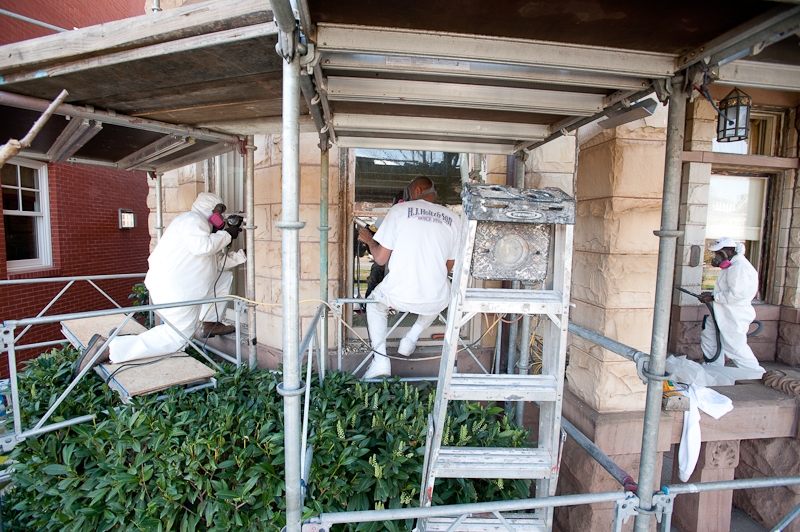While cold weather often means homeowners turn their attention to indoor projects, it’s possible – and may even be essential – to paint some or all of a house’s exterior during the winter months.
“Paint is the protective coating over top of the wood substrates,” says Thomas Freeman, sales representative for The Sherwin-Williams Company. “Wood, when exposed to the elements – whether moisture or sun – over time, is going to rot. The paint is what protects it from rotting.”
While prolonged exposure to moisture can lead to problems at any time of the year, the issues become more pronounced in cold weather, as ice crystals form and expand, enlarging cracks. Because damage occurs under the surface, it can be easy to miss.
“You can have structural issues, not just damage to windows and siding,” Freeman says, adding that masonry may also suffer and should be part of any exterior assessment.
For many homeowners, their house is their largest investment. The exterior should be surveyed regularly, but especially as colder and wetter weather looms, to ensure that cracks are sealed and small issues are repaired, either through caulking or painting. H.J. Holtz & Son offers this exterior review at customers’ request. Necessary repairs, including replacing rotted or damaged wood, can be handled by the in-house carpentry team.
If painting is required, the good news is that certain premium exterior paints can be applied at temperatures as low as 35 degrees Fahrenheit. Sherwin-Williams offers four options: SuperPaint, Latitude, Duration, Emerald, and Emerald Rain Refresh. “Each has different characteristics with durability, how they work, and how they perform in different weather conditions,” Freeman says. “Some are even self-cleaning.”
These premium exterior paints can be used at lower temperatures and resist moisture in just two hours – 50% faster than typical exterior paint. Still, Freeman says, it’s important to pay attention when painting in the winter.
“In summer, painters can start as early as 6 or 7 a.m. and work until 5 or 7 p.m., as long as they’ve got sunlight,” he says. “But just because the sun’s up in winter, it doesn’t mean conditions are conducive to painting. You need to start later – to make sure it’s warm enough – and you need to finish earlier, to give the paint time to dry before the sun sets and evening dew creeps in.”
It may take more days to paint a house’s exterior in the winter, but the actual number of hours needed may not be as high as it seems, as work hours are stretched over more days, to ensure painting is happening with optimum conditions. Prep work can take a bit longer, as it’s not wise to leave wood exposed, waiting for paint. A crew is more likely to prep in sections, rather than all at once.
The key, Freeman says, is to hire painters who know how to work in winter. “Some guys aren’t responsible about waiting for the right conditions,” he says. “[Company president Rick] Holtz isn’t like this, fortunately. He’s going to get it right whether he makes money or not. Not all these guys are.”

